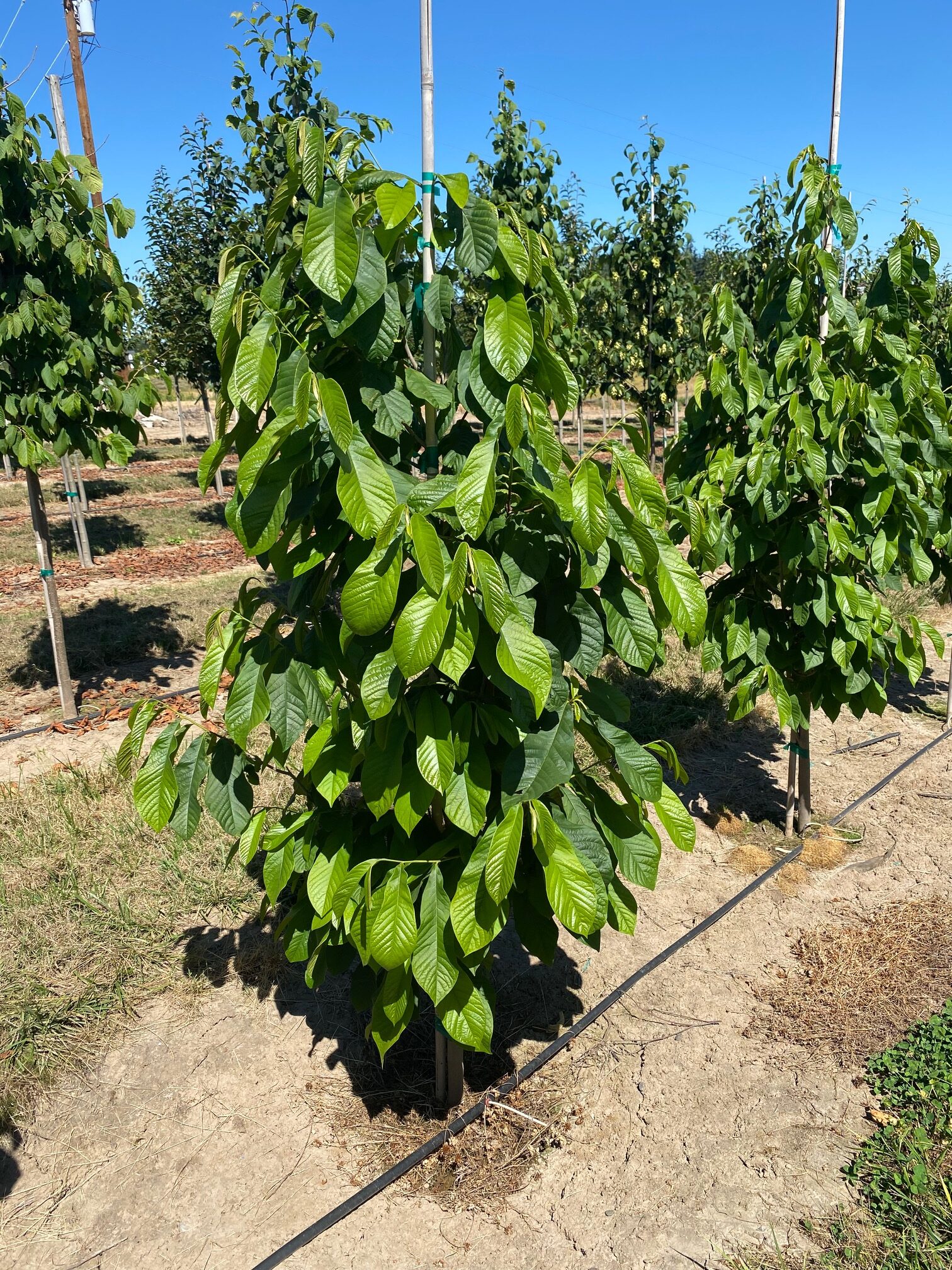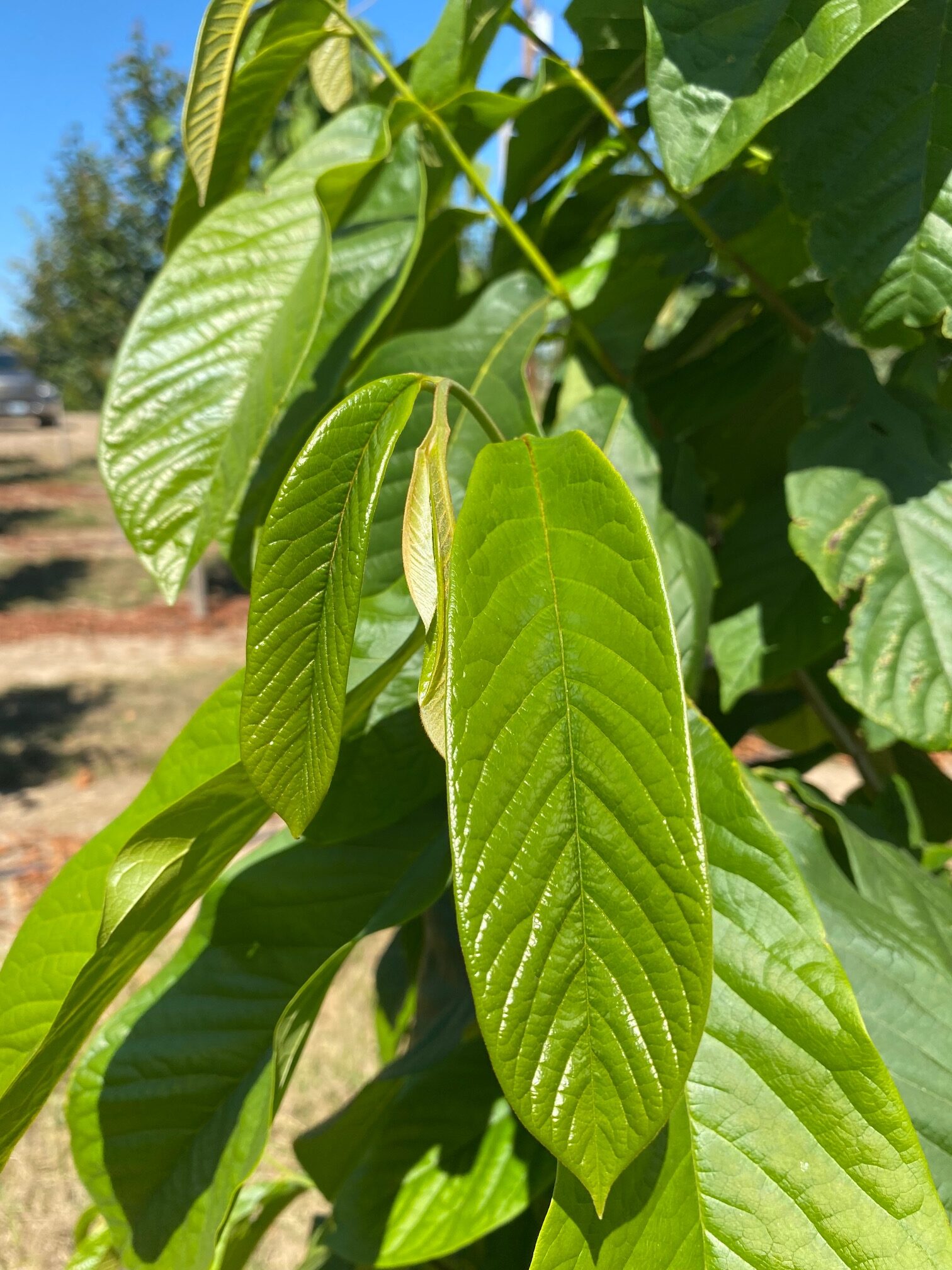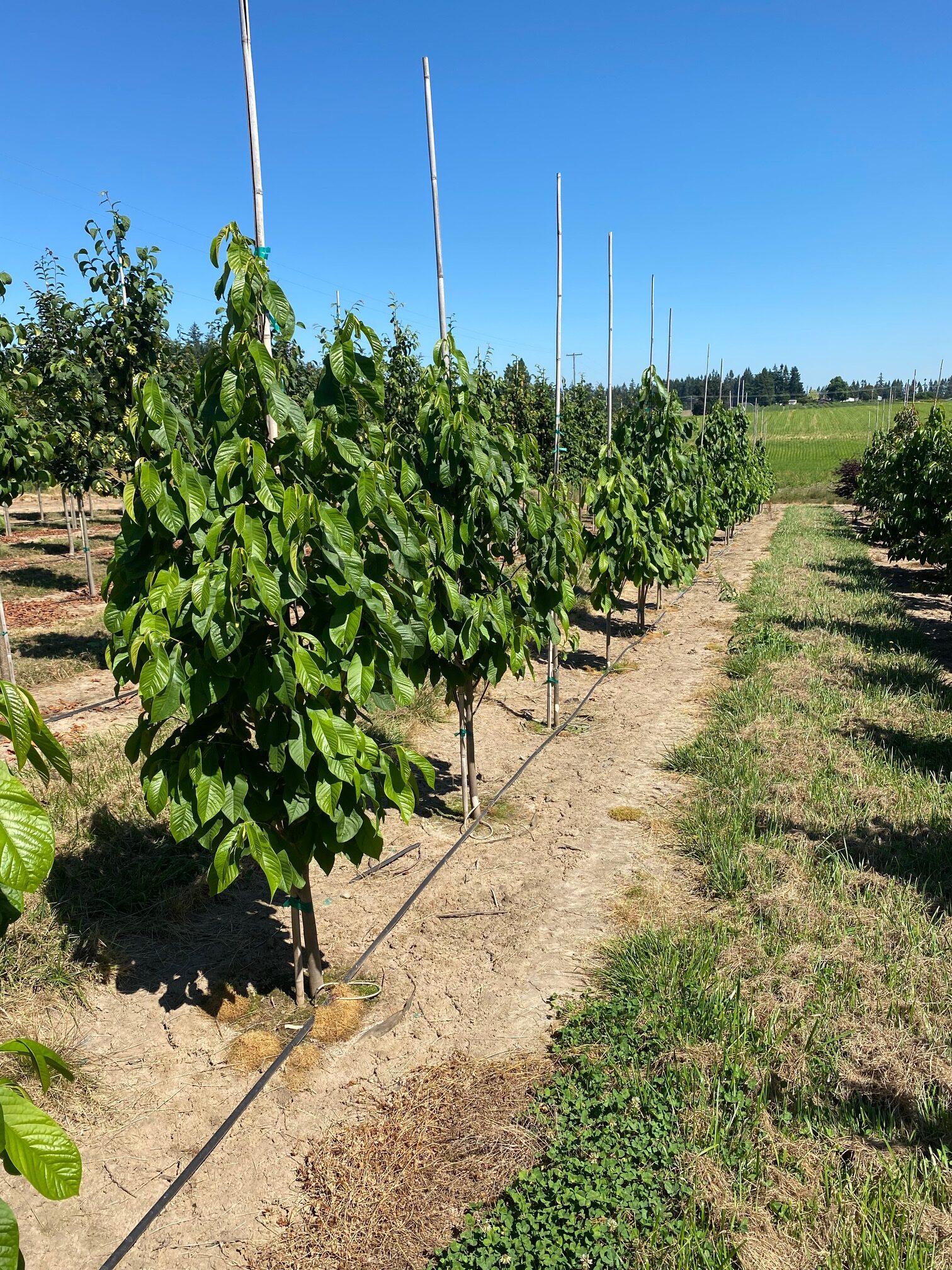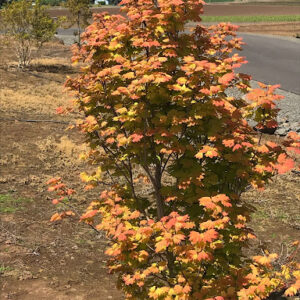Asimina triloba – Paw Paw Fruit Tree
$250.00
Botanical Name: Asimina triloba
The Pawpaw or Paw Paw Fruit Tree (Asimina triloba) is an understory, shrub, or tree that originates in Missouri. It is found growing near streams, on woodland slopes, and in lowlands and floodplains. The Pawpaw Tree does well growing with some shade, making it very useful for landscaping use, although it can grow leggy with too much shade. Its form is upright and broadly pyramidal. The Paw Paw Tree is often grown for its delicious fruit.
The flowers have an usual cup-shape and a beautiful shade of deep purple. They appear in spring on the bare branches, and are followed by the edible fruit that develop later in the season. The long, thin, yellow-green fruit ripen to dark brown in the fall, when they are ready for harvest. They are similar in texture and taste to bananas or mangos. They can be used to make ice creams or eaten raw. However, they are not tolerated by all who eat them, causing nausea in some. The paw paw fruit is also enthusiastically enjoyed by wildlife!
The leaves of the Paw Paw Tree are coarse and elliptical in shape, reaching 6-12 inches long. They are mid-green in color, and their growth habit is graceful and slightly weeping. The fall color is yellow, but the leaves hold their green color late into the fall.
No serious disease or insect problems.
Product Dimensions
The purchased tree will be within the ranges below. If you require a specific size, please call us at
(503)585-8337
Please review Product shipping dimensions to ensure size of vehicle used for pickup of tree is sized correctly.
Click here for more information.
- Caliper Range p
- 1 3/4"-3"
- Height Range p
- 8-12'
| Shape |
Pyramidal
|
| Flower Color |
Purple
|
| Flowering Time |
April, May
|
| Fall Color |
Green, Yellow
|
| Growth Rate |
Moderate
|
| Uses |
Fruit Tree, Habitat Gardens, Rain Gardens, Understory, Woodland Gardens
|
| USDA Zones |
5, 6, 7, 8, 9
|
| Mature Height |
15'-20', 20'-30'
|
| Mature Width |
15'-20', 20'-30'
|
| Exposure |
Full Sun, Partial Shade
|






